The Gathering Place...
bubbasgma
9 years ago
Featured Answer
Sort by:Oldest
Comments (1.8K)
Ali
9 years agolast modified: 9 years agomefor
9 years agoRelated Discussions
Good Growing Practices - An Overview
Comments (271)Hi Al, this is Iris. I was referring to your 2011 "Growing for Beginners" post when I mentioned adding heads. I thought it was so informative and had not read it before. I added some heads and broke out some of your paragraphs so the text is broken up a bit and more digestible. I don't know however how to attach a word document to this forum. I will try to copy and paste as much as will fit here as a comment. I hope it doesn't put off your following. Once you review this let me know and I will delete it so it doesn't distract your readers. The editor who will work on your book when you get to it will do much more but this is a taste of how it could work! An Overview for Beginners color>size> My hope is that this thread becomes a gathering place for beginners and the experienced alike, a place where reliable information that is rooted in sound science and horticulture can be found. We will see how that 'gathering' part goes, but I have enjoyed enthusiastic participation on many of my other threads on this and other fora, so I am optimistic. What I Can Offer (or you could retitle Why I do What I do or Some Background) As I consider what I am going to share with you and how to go about sharing it, I am compelled to offer some background that will hopefully allow some degree of comfort in placing some measure of value on my commentary. I enjoy the growing experience tremendously. I have worked hard toward increasing my skill level for more than 20 years, and I look at sharing what I have learned about the growing sciences as a natural extension of the enjoyment I get from nurturing plants - sort of nurturing people who nurture plants. I am invited to lecture frequently in the mid-MI area, and occasionally beyond. I lecture, conduct workshops, and do demonstrations on a variety of subjects related to growing, but most frequently I talk about things related to container culture, with maintaining houseplants being one of the most requested topics. I also enjoy participating here at Garden Web and at another popular garden forum sites. Hopefully we will be using some links to some of my other offerings here that will help you share some of the confidence others have shown in the reliability of my offerings. Those that know me know I am not after recognition or glory, I simply feel I can help any beginner with a willingness to learn and apply the newfound information, and I get a large measure of personal satisfaction from the feeling I may have helped someone along the path to becoming a better grower. Container Growing: Doing What is Best for the Plant, Removing Limitations The first challenge is to offer information that a beginner can digest, and in such a way that he or she feels it is important enough to act on. I am first going to flesh out the main issues that, if understood, will make anyone a better grower and hope I have created enough interest that there will be plenty of questions so I can go into greater detail in the answers. For what it is worth, I tend to look at growing anything in containers from the perspective of what is best for the plant, not what is best for the grower. Far more often than not, the two ideas are mutually exclusive, so if grower convenience is a large priority of anyone reading this, there is not much sense in reading on. Growing well does take a little thought and a little effort. The houseplants we grow are perennials nearly all, capable of growing for many, many years and of being passed from generation to generation. With attention to the areas I will cover in this post, you will discover that you can maintain your plants in good health for as long as you continue to commit to providing favorable cultural conditions. Your plants are all genetically programmed by Mother Nature to grow well and look beautiful. It is only a lack of knowledge and skill in the area of providing the cultural conditions they prefer that prevents them from growing to their potential. That sounds harsh, but it is the truth. I have never seen anyone other than me discuss growing plants in containers from this perspective, that is (and it bears repeating) your plants are already genetically programmed to grow well and look beautiful, but it is up to you as a grower to eliminate the limitations so often associated with growing in containers. This post is about isolating some of the factors that are commonly the most limiting and helping you to reduce the limiting effects. For more information on the concept of limiting effects, do a search using the words "Liebig's Law of the Minimum" or follow this embedded link to How Plant Growth is Limited additional discussion. Choosing Soil Growers should realize that the most important choice they will make when establishing a new planting or when repotting is their choice of soil. A poor soil is probably behind more than 90% of the issues that growers come to the forums seeking remedial help for. Collapsed or dead plants, spoiled foliage, insect infestations, disease issues are all symptoms usually traceable directly or indirectly to a poor soil. This is so important to understand, that I will devote the bulk of my effort toward making it clear why I offer this contention. The Importance of Light Light is extremely important to plants. Plants make their own food, using water, CO2, and energy from the sun. Inadequate light means the plant cannot make enough food to grow to the potential for which it was genetically programmed. I will not go into great detail about light because when it comes to houseplants; you either have good light or are forced to deal with the limiting effects of inadequate light. If the thread finds favor, we can discuss supplementing light and how to prune to help compensate for the leggy appearance caused by insufficient light, or explore other topics of interest relating to light. Supplementing Nutrition Nutrition supplementation is a requirement for normal growth and good health when growing plants in containers. In the earth, many of the nutrients are supplied by minerals in the soil. Container soils usually have no mineral component (and it is best that they do not in most cases - more later), and the soil components break down so slowly and are washed from the soil so quickly that deficiencies are virtually assured if you do not fertilize. Choice of fertilizer is also an important consideration, as we will see. Repotting versus Potting Up That there is a difference between the two operations is a concept foreign to most hobby growers. One of the practices ensures your plants will at least have the opportunity to grow to their genetic potential within the limits of other cultural conditions; that would be repotting, with its accompanying root maintenance, complete or partial bare-rooting, and a change of soil. Potting up, on the other hand, only temporarily allows the plant to grow a little closer to its genetic potential before root congestion and a diminished number of fine roots quickly returns the plant to the state of limited growth and vitality it was experiencing before potting up. Watering Best Practices and the Significance of Air Watering habits - extremely important and inextricably linked to soil choice, which is why I saved it until the end of this, the short list - so it would lead me back to the most important consideration - the one most apt to determine the difference between frustration and a rewarding growing experience. Air is as important as water in all soils plants are to be grown in. Plants absolutely love plenty of air in the root zone, and rebel very quickly at too much water in the soil. I am going to describe what happens when you water plants growing in a soil that retains too much water. There are actually two possibilities. The first is, you water, and a part of the soil near the bottom of the container does not drain. This water has a name, it is called 'perched water', so named because it 'perches' (like a bird) in the soil above the pot bottom. This excess water is critically important because it very quickly begins to kill roots growing near the bottom of the pot - within hours. The first roots to die are the roots that do the lion's share of the work - the very fine roots often referred to as 'hair roots'. The longer the soil remains saturated, the larger the diameter of the roots killed. When air finally returns to this once saturated soil, roots can only then begin to regenerate. This takes energy and is extremely expensive for the plant in terms of energy outlay. During the cyclic death and regeneration of roots associated with excessively water-retentive soils, the plant is actually forced by chemical messengers that tell it to 'grow roots', to direct energy that would have otherwise gone into growing more leaves, branches, blooms, fruit, or just increasing the overall mass of the plant, to replacing the lost roots. The second thing that might happen when you water if you are using a water retentive soil is, you adopt the practice of watering in 'small sips' so the soil remains damp instead of wet; this, to guard against root rot. It makes sense to only give the plant a little water at a time so the soil never gets soggy - right? That might be a workable option if you have the luxury of using water that has been processed through a reverse osmosis water filtering system, or if you are watering with distilled water, but regular tap water has things dissolved in it, like magnesium, calcium, iron, sulfur, and others. If you water in 'sips', these dissolved solids remain in the soil and build up over time. This has an impact on the plant's ability to absorb water and the nutrients dissolved in water. To illustrate the potential impact these dissolved solids have on a plant, picture in your mind what curing salt does to ham or bacon. It literally pulls water from the cells & dries out the meat. Any solutes (anything dissolved) in the solution surrounding plant roots can have the same potential effect on plant cells. It can make it difficult for plants to absorb water and nutrients, it can make it impossible, and in some cases can actually reverse the flow of water so it moves OUT of cells, effectively collapsing and killing them. We commonly call this 'fertilizer burn', but it does not necessarily have to result from an over-application of fertilizer. When people come here wanting a remedy for foliage that is dying, with dried edges & tips, almost always it is the result of over-watering exacerbated by water-retentive soils and the accompanying limitation that has on root function and metabolism, or as a result of the presence of a high level of dissolved solids from fertilizers and tap water having accumulated in the soil making it difficult for the plant to take up water. Both are so closely related to poor, water-retentive soils we can say the problem is inherent if not addressed directly. Misting cannot correct a problem related to over-watering or a high level of solutes in your plant's soil. Low humidity can be a contributing factor to the common symptoms of necrotic (dead) leaf tips and margins (edges), but for the actual cause, look to impaired root function from over-watering or a high level of dissolved solids in the soil. BOTH of these conditions are nearly always linked to a poor soil. Misting raises humidity for a few minutes, but there are almost 1,500 minutes in a day. Raising humidity for 10 of the 1,500 has virtually no impact on the plant's ability to keep foliage hydrated. If you have foliage with burned leaf tips and margins, you should look to the soil and the state of root health for the cause. When using water-retentive soils, it seems almost as though we are on the horns of a dilemma. If we water generously, we risk the soil remaining saturated so long it causes root rot, or at a minimum - impaired root function. If we water sparingly, in small sips, we risk an accumulation of dissolved solids from tap water and fertilizer solutions in the soil - so what to do? Well - I think we should look at an option that solves both issues and makes things much easier for the grower, while also providing the grower with considerably more latitude when it comes to watering and fertilizing. Selecting the Right Soil The factor that determines how water retentive and difficult a soil is to grow in, is the size of the particles it is made from. The smaller the particles - the greater the water retention and the greater the degree of difficulty for growers. Soils made of any combination of peat, coir, compost, sand, topsoil, and other fine particulates are going to be very water retentive, which we know is undesirable from the perspective of the plant, and they cannot be suitably amended to correct drainage or the height of the perched water by adding perlite or other drainage material. If anyone disagrees with that statement, please ask for an explanation before mounting an argument or offering individual observations. Adding perlite to soils reduces the overall water retention of the soil, the reduction usually being a plus, but it does nothing measurable for drainage (flow-through rates) or the height of the perched water table, the later being the critical consideration when it comes to a healthy root zone. Soils made of a high % of pine bark or other inorganic particles will have plenty of large air spaces called macropores. These are pores that will not hold water, only air, even when the soil is as saturated is it can be. They are critical to a healthy root zone. If you build a soil with plenty of air space, it hardly matters what the soil is made from. What is important is how the soil is structured. I will grow a perfectly healthy plant in a bucket of broken glass on a dare and a wager if anyone is interested in taking me up on it. If you have a soil with a healthy structure, a good nutritional supplementation program, and have good available light, the rest is so easy anyone can do it - honest. I have seen it happen over & over and over again. You will not go wrong if your primary focus is providing a healthy - a truly healthy environment for roots. Roots are the heart of the plant. Roots come first. If you cannot keep the roots happy, there is no chance you can keep the rest of the plant happy. That was a paraphrased quote from Dr. Carl Whitcomb, PhD, who wrote the bible on "Plant Production in Containers". This ends the beginning discussion about soils. Until you are able to grow plants, the growth rate and appearance of which you are happy with, focusing on removing the limitations placed on your plants by soil choice will almost always constitute the best use of your energies. After reading this far, if nothing else, I hope you take that concept from this offering. It is the most important point and the best piece of advice I can give you. If you are interested in knowing HOW to make soils that will help you remove the limitations, now is the time to ask. Fertilizing Your Plant Nutrition is an area that is very misunderstood when it comes to container culture, but it is actually very easy. It is also very easy to become confused because there are so many numbers that represent different fertilizer NPK percentages and so many different kinds of fertilizers. I will need to use some numbers, but I think an understanding of NPK percentages as opposed to fertilizer RATIOS is important. NPK %s tell us how much (N)itrogen, (P)hosphorous pentoxide, and (K) potassium oxide (the symbol for potassium is 'K') are in a fertilizer by weight. So a fertilizer that is labeled "All Purpose 24-8-16" is 24% nitrogen, 8% phosphorous, and 16% potassium. 12-4-8 is also a common "all-purpose" fertilizer. It has exactly half the nutrients of 24-8-16, but both are 3:1:2 RATIO fertilizers. Ratios are a way of describing the amount of nutrients in a fertilizer as they relate to each other. Why is this important? It is important because we know that on average, plants use about 6 times as much N as P, and they use about 3/5 as much K as N, and now I will tell you how we can use this information to our plant's advantage. The ideal way to fertilize is to supply fertilizer at the same ratio in which plants use the nutrients. The reason is because optimal growth and vitality can be had only when nutrients are in the soil at overall levels low enough that it does not become difficult for plants to take up water and nutrients dissolved in that water. Remember what we said above about a high level of soluble in the soil making it difficult for roots to absorb water and nutrients? Nutrients also need to be present at levels high enough to prevent deficiencies. If we think about it for a second, we can see that the best way to achieve this end is to supply nutrients at the same ratio in which they are used. I noted that the NPK percentages actually tell us how much phosphorous pentoxide and potassium oxide are in a fertilizer so I can show you how fertilizer manufacturers arrived at a 3:1:2 ratio as their "all-purpose" blend. Only 43% of the P reported on a fertilizer label is actually P, and only 83% of the K reported is actually K. Once you apply these factors to any of the 3:1:2 ratio fertilizers (24-8-16, 12-4-8, and 9-3-6 are all popular 3:1:2 ratios), you will see they supply nutrients in almost exactly the same ratios as the average that plants actually use, and these fertilizers are excellent at keeping the overall level of solubles as low as they can be without creating nutritional deficiencies. There is no need to use 'specialty' fertilizers; and many specialty fertilizers, like the advertised "bloom boosters" with up to 30 times more phosphorous than a plant could ever use (in relation to the amount of N used), can be (almost always are) moderately to severely limiting because the excess nutrients are a limiting factor. The question often arises, "Should I use a synthetic or an organic fertilizer"? The answer is: "Use whichever you wish"; but the qualifiers are: Organic fertilizers are actually more accurately called soil amendments. They are mixed into the soil in the hope that at some point soil organisms will digest them and make them available in elemental form so plants can absorb them. The problem with that approach is that the populations and activity levels of soil life populations in containers are erratic and unreliable, making the delivery of nutrients from organic sources just as erratic and unreliable. What you apply today, may not be available until next month, and there is no way to determine what residual amounts of which elements remain in the soil. Soluble fertilizers like Miracle-Gro and others are completely available as soon as applied, and we know exactly what our plants are getting. They are simply much easier to use and deliver nutrients much more reliably than other fertilizer types. You can lump controlled release fertilizers like Osmocote and others in with the soluble synthetic fertilizers. With them, you get an extra measure of convenience but sacrifice a measure of control. As with all fertilizers, it is important to note the NPK percentages to be sure you are supplying the fertilizer in a favorable ratio if you want your plants to be all they can be. When it comes right down to what occurs at the molecular/cellular levels, plants take up nutrients in elemental form. They cannot absorb the nutrients that are locked in the hydrocarbon chains that make up organic fertilizers until the molecules are broken down into their most basic elemental form. At that point, all nutrients are taken up as salts, and all are in the same form, no matter if they came from compost, a dead fish, or a hose end sprayer. Plants could care less where their nutrients come from, as long as they have a constant supply of all essential nutrients at all times. It is not going to kill your plants if you use a fertilizer with a less than favorable ratio because plants tend to take the nutrients they need from the soil (solution) and leave the rest, but it is important to understand that it is 'the rest' that constitutes a limiting factor; so avoiding unnecessarily high levels of any one nutrient or nutrients whenever possible is to your (plant's) benefit. Container Growing is Not Like Growing in Your Garden It is important to understand that growing in containers is markedly different than growing in gardens. On a scale of 1-10, with 1 being growing in the garden and 10 being hydroponics, gardening in containers is much closer to hydroponics than gardens, getting a rating of somewhere around 7 or 8. This is why many of the practices that serve us so well in our gardens do not work well in containers. One area that is often a sticking point is the idea we need to "feed the soil". While that is an admirable and productive approach to gardening in the earth, container soils are more about their structure than about any nutrients they might supply. If you concentrate on your soils structure and durability, and more specifically its ability to hold plenty of air, you will greatly increase both the probability of consistent success and the margin for grower error. Well-aerated soils are easier to grow in and offer much greater opportunity for plants that will grow as near to their potential as possible. Protecting the Root System As noted above, most growers draw no distinction between 'repotting' and 'potting up'. I have spe...See MoreDo you Remember?
Comments (6)Ah special places. Nice warm cozy feelings. Thanks! I like your visual Suze. Don, heavy happy sigh. Naval Post Graduate school. Mmm. Bronzed beauties. I do mean the guys. Coppertone always brings back that memory. That and the big ball room I could envision the ball that had taken place just seeing the confetti on the floor. Mommy in her ball gown and daddy in dress whites. Aw, that makes me cry now. They were a beautiful couple. My first place after leaving home? You guys make me see how spoiled I have lived even if I've never lived in a mansion. Do you want to know about the dorm I lived in or the first real home I had after I left school? I'd waited a year to attend MTSU. My best friend throughout high school was a year behind me and I wanted to wait for her. I spent that year making friends at my mom's office, thinking, insurance, ick, but I can stand a year. Ended up loving every minute of the camaraderie and fun we had in that office. Little did I know I'd do that for 17+ years!!! But I digress. Staying in school during the week and at home on the weekend, we alternated driving "home". MTSU is known as a "suitcase college" for just that reason. There is nothing to do there, so everyone leaves. It was a reasonable size room with two huge windows that overlooked the lawn and trees the size of buildings. It was one of three of the original buildings built in 1911 for Tennessee Normal school and it smelled, looked, and felt like it. We'd have to take our key every time we left the room because the door automatically shut and automatically locked. My roommate friend came to be too dependent upon me having a key and one day she asked me if I had my key I said no. You shoulda seen her go ballistic! Good thing I did have it, but I think she learned how much she took me for granted. In those days, dorms weren't co-ed. Ever. There was visitation on Tues/Thurs for us, next door it was Mon/Wed and as I stated before the grounds were empty by midday on Friday, so no need for visiting. The hours were 6-9PM. How archaic? Since it wasn't co-ed, if the handyman came to fix something you'd hear "Man on the Hall!" once they entered. That's because there were only two bathrooms total for the whole floor and one might be in half dressed mode. It had two toilets and two showers, three sinks and a couple of mirrors. People would hang out in the halls smoking. Clove cigarettes were popular then and the halls would smell of cloves all day long. Not so bad I guess, coulda been cigars. There was good food and you could get anything you wanted that you'd get at home, from baked chicken to huge sandwiches. But no fast food. We had a vending machine in the lobby of our dorm and my friend would "borrow" enough to buy some candy while we studied (she paid it all back one year much later on when she paid for a trip to Disney World for me). Dr. Pepper and peanut M&Ms. Always brings back studying thoughts. And we had one tv for the whole dorm! We'd try to finish up lab work (beakers and scalpels away!) by 3 so we could watch Days of Our Lives. Those were the days. Little did I know how good they'd be. My grandparents had paid for the first year, my mom was too poor to pay for anything else, and I didn't know how to apply for and get FAFSA. Phooey on my high school for not telling me. Shame on them. I was poorly equipped. But I went to back to work at the insurance place and found a friend who introduced me to my first husband. He'd attended MTSU. He'd sold cars where I bought my first car. He'd even worked at Willis Corroon! Which is where he'd met my friend. We'd all go watch the Nashville Sounds play or hang out at Bennigan's eating and telling jokes all night long. Greg and I married and moved to Murfreesboro on the river. It was a beautiful place that had leaves that looked red and gold in the fall, pines that looked lovely sprinkled in white snow, and then the red and gold trees would be covered in blossoms come spring. I guess they were Bradford pears. That place was a two floor townhouse. It had a grill in the kitchen and huge dining room. There was a wood deck out back and you could sit with your morning coffee looking at the lazy river and trees or watch the fog lifting. It's also the place were I met the love of my life, Keegan kitty. He'd sit on the steps and headbutt Greg with such love and deference. Greg would call him Keegan bunny as those tiny little legs would hop from step to step until he reached the top. And the reason he picked him out is because he was orange and white, go Vols! I hated UT. At least Keegan was cool. We'd spend our weekends with TA, Jay, Rita, Kathy, Kenny, going to ball games, eating out, or just telling TA to shut up ;) He worked for TBI and said he loved to take homes from "widows and orphans", boy he was a pistol. Some days we went to the ball games, some days hockey, and some days they'd watch NASCAR. One particular New Year's Eve we had a party where Kathy and I sat talking to each other and staying pretty sober. There was a friend of a friend who got noticeably tanked and we saw eating dip with difficulty. We didn't remember it being chewy, so we went to see what was going on. The jar had been dropped and had broken glass in it! Kathy and I never forgot that. We were silly kids having fun. I miss those days some days, but mostly not....See MoreKT Gathering Place - Our Recipe page
Comments (12)I'm not sure if it was a website glitch now or not. It may have just been my pc! :^( I was having trouble with ever site I went to yesterday. Oh well, I guess it needed to be done and I needed things to do for the next few weeks....See MoreLayout help please for 1969 kitchen!
Comments (15)Thanks for the thoughts and the questions. For writing such a long post, I sure didn't explain very well! Here's some more information about the house and lot. None of the doors on this level go out to a yard. The house is on a steep grade, so the deck that's outside the living and dining area is at least 15' above grade and doesn't lead to a yard. The deck that's outside the Room Behind the Kitchen is like a catwalk that leads to the carport on the west. That deck will be used rarely - and mostly just to get to the grill that will be stored there. It might make more sense to call it a balcony instead of a deck, given how high off the ground it is and how small it is. I'm leaving the dining room intact, but I didn't do a great job of drawing that. The kitchen dimensions are on top of the dining room, so it looks like the kitchen extends there too. Sharonite - I'll try moving the range to the outside wall. I was trying for lots of windows, but a functional kitchen is more important than windows! It sounds like I've strayed far from a functional kitchen, but it's not too late to fix it. Bflenton - I'll try the DW on the other side and try moving the fridge. Lavendar - I'd love to put that door somewhere else - but it would be a pretty major deal to connect the two decks/balconies since they are so high off the ground. Let me play with that a bit once I'm on the computer that has the layout program. Marcolo - So, uh, how do I get that schoolbus out of my kitchen? Judydel - When I walk in the front door, I always turn to the right and head to the living room. The space on the right of the stairs is part of the living room, but the ceiling heights are different, so it feels a little like a separate space. The kitchen is about 11'-9 1/2 or 11'-10" wide, so there's an error in my string of dimensions. The windows in the dining room come close to the floor. The ones on the east are sliders to the deck on the east. The deck is the pointy shape that shows on the existing layout. There is no back door in the existing plan, just sliders to the deck. With the cliff-like lot, there's a main entry door on this level and a sort of back door on the level below where there's also a family room, shop, laundry and two bedrooms. The bedrooms that we'll use are on the top floor. Palimpsest - I had a soft spot for the old kitchen too. But, along with being small, the appliances didn't fully function and the cabinets were in bad shape. The previous owner had cut strange holes inside them and there was water damage. The realtor's photos skipped over those details. Why will I hate the long island? I could try a U-shape instead. I'll be back later tonight after the 3-year old is asleep and will post some layouts that try to address the comments - Just wanted to respond now to thank everyone for the input and to try to clear up what the existing house/lot/decks look like. All of the suggestions are greatly appreciated....See Moremyperfectadvice
9 years agomyperfectadvice
9 years agomyperfectadvice
9 years agomyperfectadvice
9 years agomyperfectadvice
9 years agomyperfectadvice
9 years agomyperfectadvice
9 years agomyperfectadvice
9 years agomyperfectadvice
9 years agopegjustpeg
9 years agomyperfectadvice
9 years agopegjustpeg
9 years agoauntiebuzzybee
9 years agounwantedadvice
9 years agomefor
9 years agomefor
9 years agoBLee
9 years agobubbasgma
9 years agobubbasgma
9 years agoAli
9 years agolast modified: 9 years agoAli
9 years agoAli
9 years agoAli
9 years agoAli
9 years agobubbasgma
9 years agoAli
9 years agolast modified: 9 years agobubbasgma
9 years agomyperfectadvice
9 years agolast modified: 9 years agomyperfectadvice
9 years agobubbasgma
9 years agomyperfectadvice
9 years agomyperfectadvice
9 years agobubbasgma
9 years agomyperfectadvice
9 years agoliasch
9 years agobubbasgma
9 years agoAli
9 years agojanbhan
9 years agobubbasgma
9 years agomyperfectadvice
9 years agoBLee
9 years agobubbasgma
9 years agolast modified: 9 years agojanbhan
9 years agoDiseño y Desarrolo Web Peru
9 years agobubbasgma
8 years ago
Related Stories
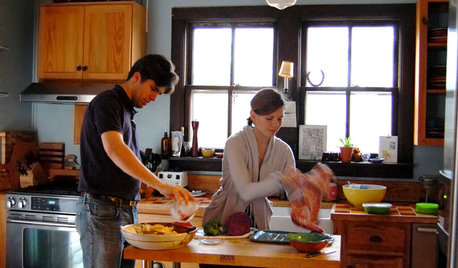
ENTERTAINING8 Stress-Busting Tips for Hosting Small Gatherings
Make entertaining easy with these ideas for casual get-togethers
Full Story
FURNITUREGather 'Round: The Perfect Conversation Area
Set up four club chairs and a round coffee table in den, library or living room
Full Story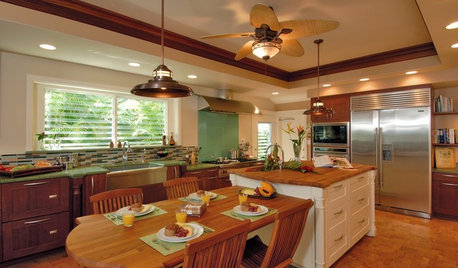
KITCHEN DESIGNKitchens Designed for Gathering
How to set up your kitchen for good workflow and fun, too
Full Story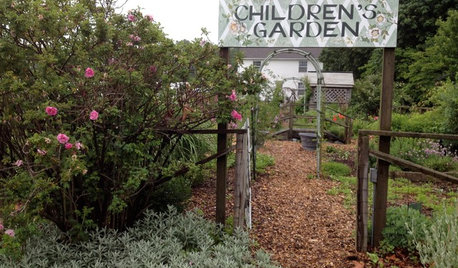
GARDENING GUIDESField Trip: Gather Ideas on a DIY Garden Tour
Get inspired by one gardener's local tour, then check out her suggestions for unofficial tours of your own
Full Story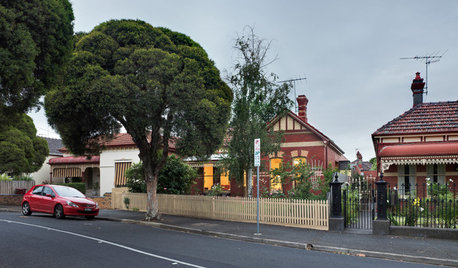
HOUZZ TOURSHouzz Tour: Welcoming Light and Gatherings in Melbourne
Large dinner parties are now easier for an Australian homeowner, thanks to a sunny addition that merges with the outdoors
Full Story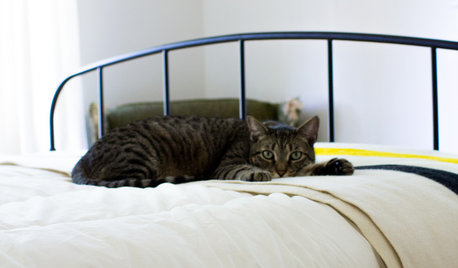
MY HOUZZMy Houzz: Cozy Charm for Newlyweds in Seattle
Houseplants and eclectic decor have turned this 1920s Craftsman into a gathering place for local creatives and musicians
Full Story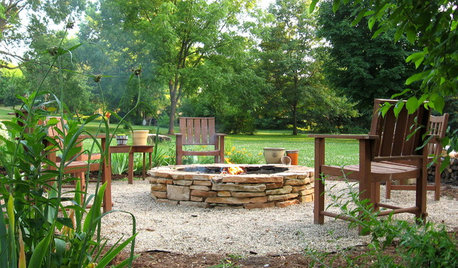
GARDENING AND LANDSCAPINGHow to Make a Stacked Stone Fire Pit
See how to build a cozy outdoor gathering place for less than $500
Full Story
ROOM OF THE DAYRoom of the Day: Warming to a Contemporary Family Room
Sleek lines and inviting textures and colors create a soothing, comfortable gathering place in San Francisco
Full Story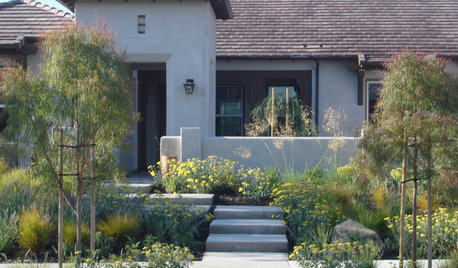
LANDSCAPE DESIGNGet Along With Less Lawn — Ideas to Save Water and Effort
Ditch the mower and lower your water bill while creating a feast for the eyes with diverse plantings and gathering places
Full Story

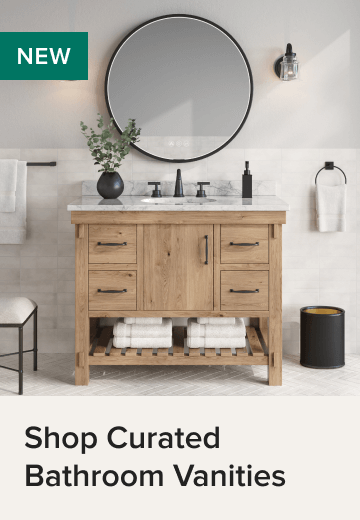

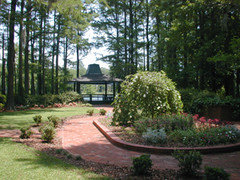







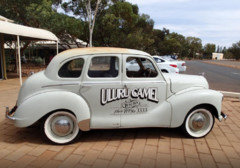















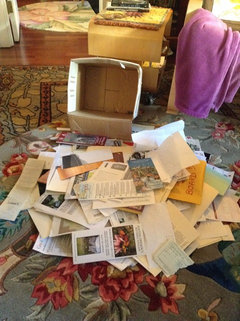







Rina